
| Mineral exploration | ||
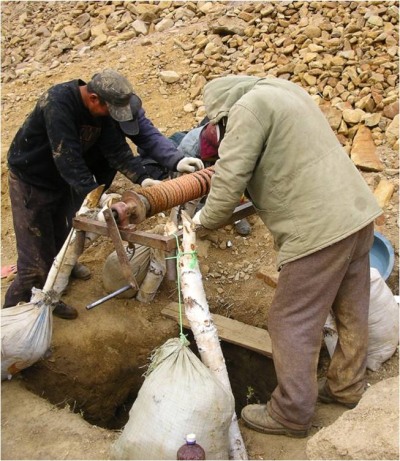 |
The selection of exploration targets is a time consuming and expensive process. It has defined the development of both private and public sectors for decades, where errors have led to notable economic losses. The precise and accurate selection of exploration targets helps to reduce the expenditure of finite resources, while providing support to balanced economic and social developments. |
|
 |
advangeo® - Creation of mineral prospectivity maps by artificial neural networks: methodology, experiences, results, application Experiences of 5 years of research and development have been used to implement the advangeo® Prediction Software providing the ANN technology in a GIS environment. The software guides the user through different steps of data preparation, network training and application, makes the calculations repeatable and helps to visualise the results. Many useful features, such as automatic mapping of vector and raster data to base grids, calculation of derivatives, and generation of Euclidian distances are included. |
|
 |
Artificial neural networks (ANN) are a comprehensive data-driven modelling approach for creation of mineral predictive maps. Based on a “self-learning” process, this artificial intelligence (AI) technology can be used to interpret almost any geo-scientific data for generation of both qualitative (prediction of locations) and quantitative (prediction of locations, grades, tonnages) predictive maps. | |
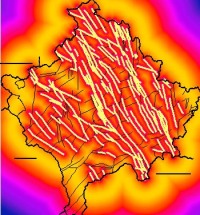  |
The technology provides excellent results if the genetic properties of the target mineralisation are known. In this case, the existing knowledge can be used for preparation of model input data: e.g. separation of favourable lithologies, tectonic structures and stratigraphic units from the database (e.g. geological maps). On the other side, the approach is very helpful to analyse mineralisation-controlling features and better understand the spatial distribution of mineral occurrences: by stepwise adding of single datasets, the controlling parameters can be understood and used for compilation of genetic models and concepts. In reality, usually a mix of the above procedures is used. | |
|
advangeo® Minerals - Extension to support mineral explorations The extension advangeo® Minerals was developed to adapt the advangeo® Prediction Software to commodity-related questions. The advangeo® Prediction Software uses a data-driven modelling approach based on artificial intelligence algorithms, which can be used for the interpretation of various geo-scientific data to conduct both qualitative and quantitative predictions. The extension assists the user in each step from data preparation, model generation to the creation of forecast calculations. Qualitative prediction (Prediction of localities) Qualitative predictions provide information about the probabilities of the occurrence of a certain type of mineralisation at a certain locality, but not about its intensity. The model training requires known localities of mineralisation with the same or similar genetic properties. Through sensitivity analysis, the software can be used to develop and improve genetic models and concepts. The workflow of the modelling starts with the stepwise sensitivity analysis of related parameters (localisation of the mineralisation) on available input data layers (e.g. geological, geochemical, geophysical, tectonic maps). Afterwards, the model is generated by the combination of sensitive layers. The calculation result of a qualitative prediction is a prospectivity map. |
||
| Example of a qualitative prediction: Prediction of localities of gold mineralisations in NW Ghana | ||
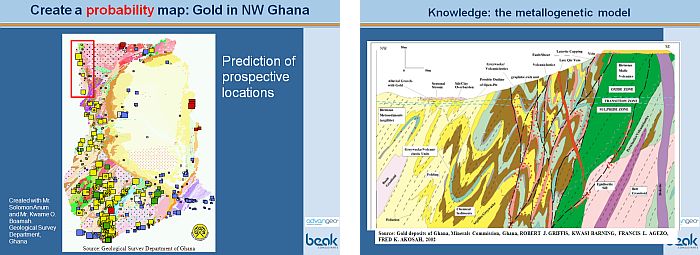 |
||
|
General workflow: Integration of data layers and known mineralisation 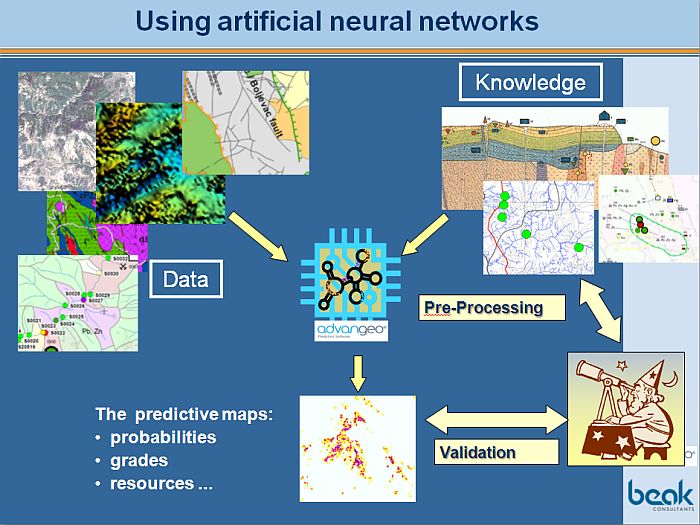 |
||
Improvement of prediction results by stepwise adding of data layers 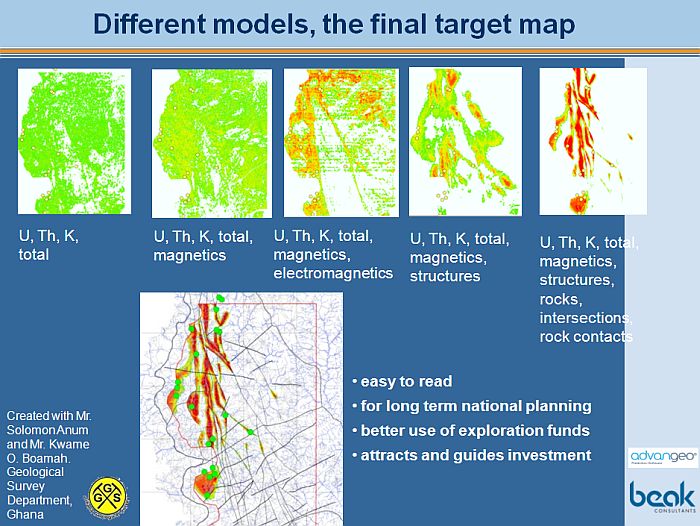 |
||
|
Quantitative prediction (Prediction of grades / tonnages and localities) Quantitative predictions provide information about the occurrence of a certain mineralisation at a certain locality as well as the expected amount, content, substance. The required input information are the known localities and their quantitative parameters (e. g. grades, tonnage). The workflow of the modelling starts with the stepwise sensitivity analysis of related parameters (localisation of the mineralisation) on available input data layers (e. g. geological, geochemical, geophysical, tectonic maps). Afterwards, the model is generated by the combination of sensitive layers. The calculation result of a quantitative prediction is a map of grades or tonnage. |
||
Example of a quantitative prediction: Sea floor manganese nodules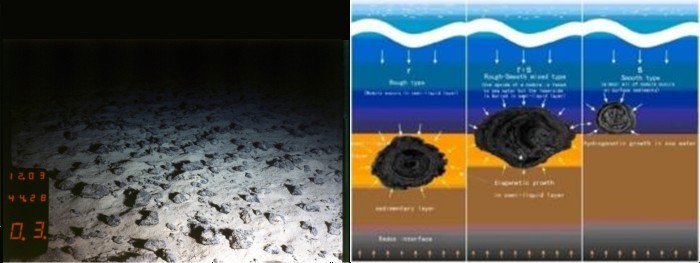 |
||
Training of the artificial neural network 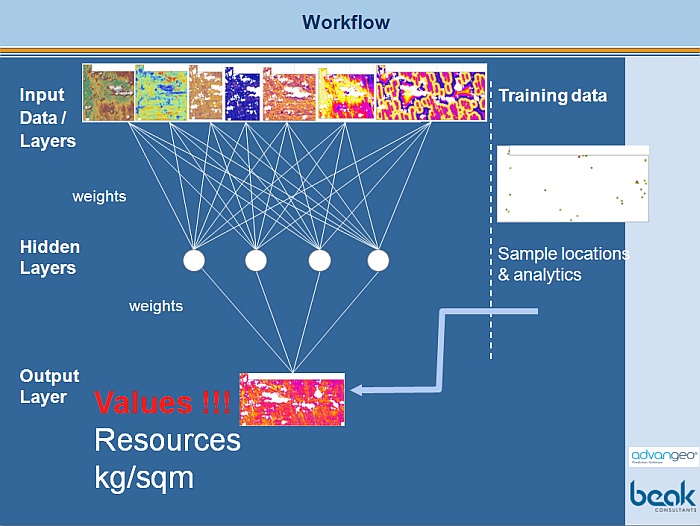 |
||
|
Result of advangeo® Minerals: Prediction map of see floor manganese nodule density (kg/m2) Two scenarios |
||
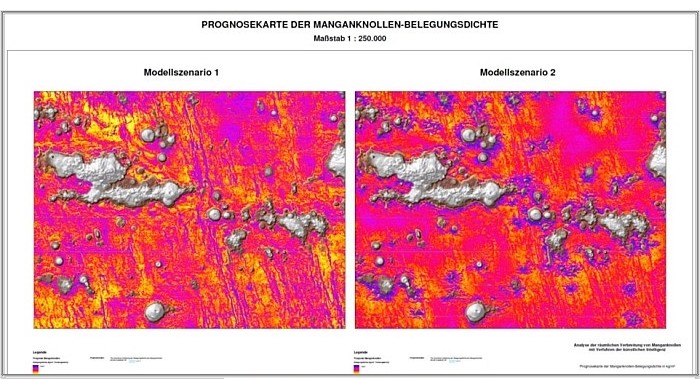 |
||
